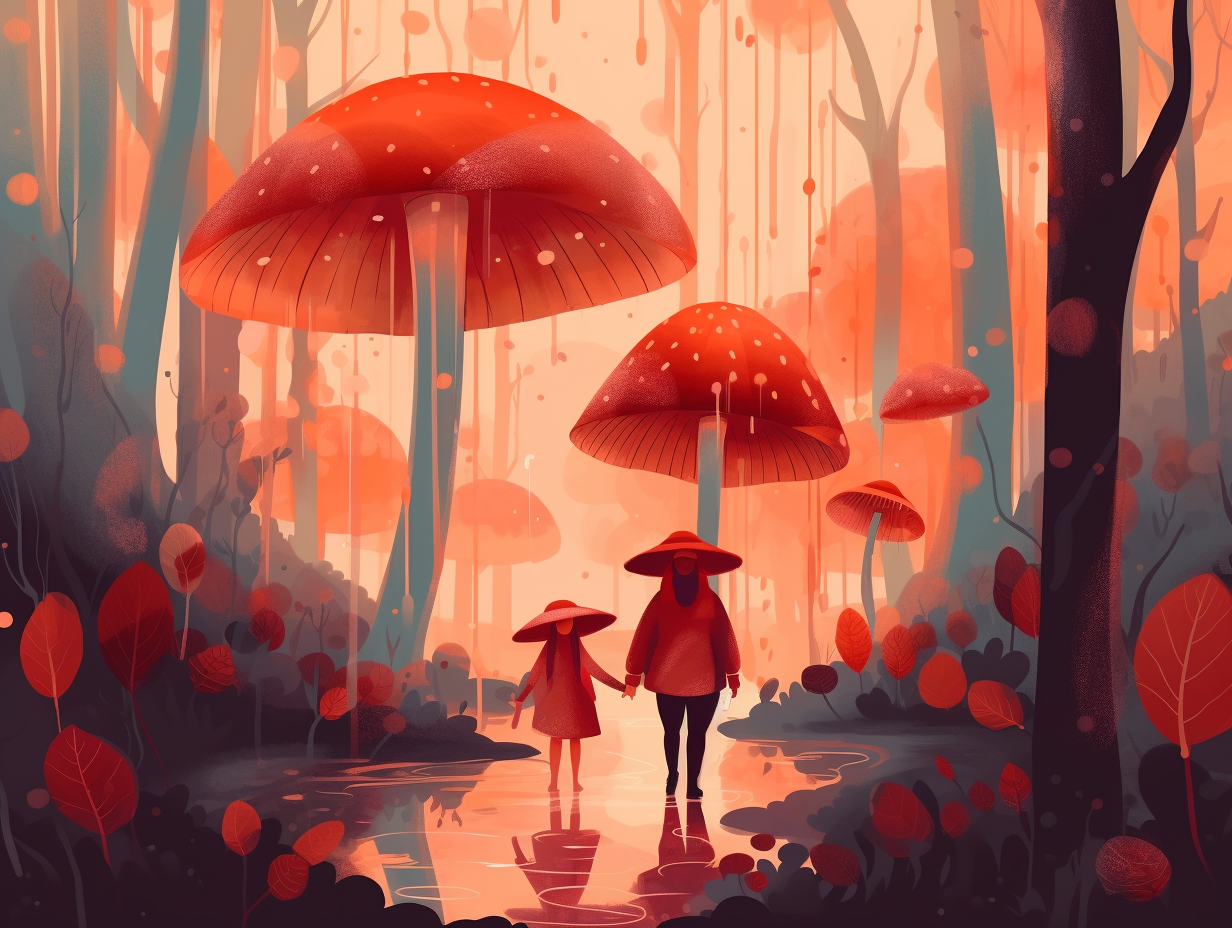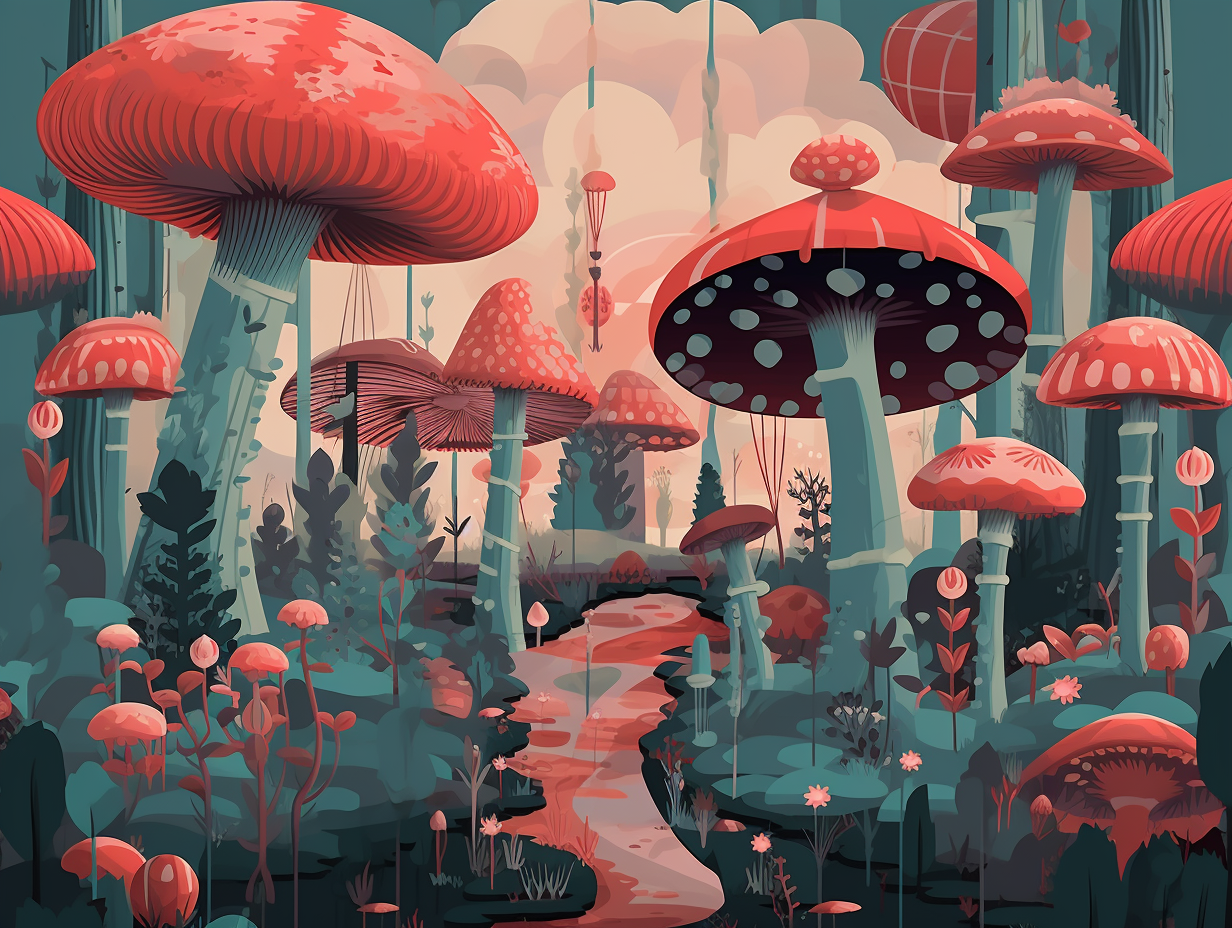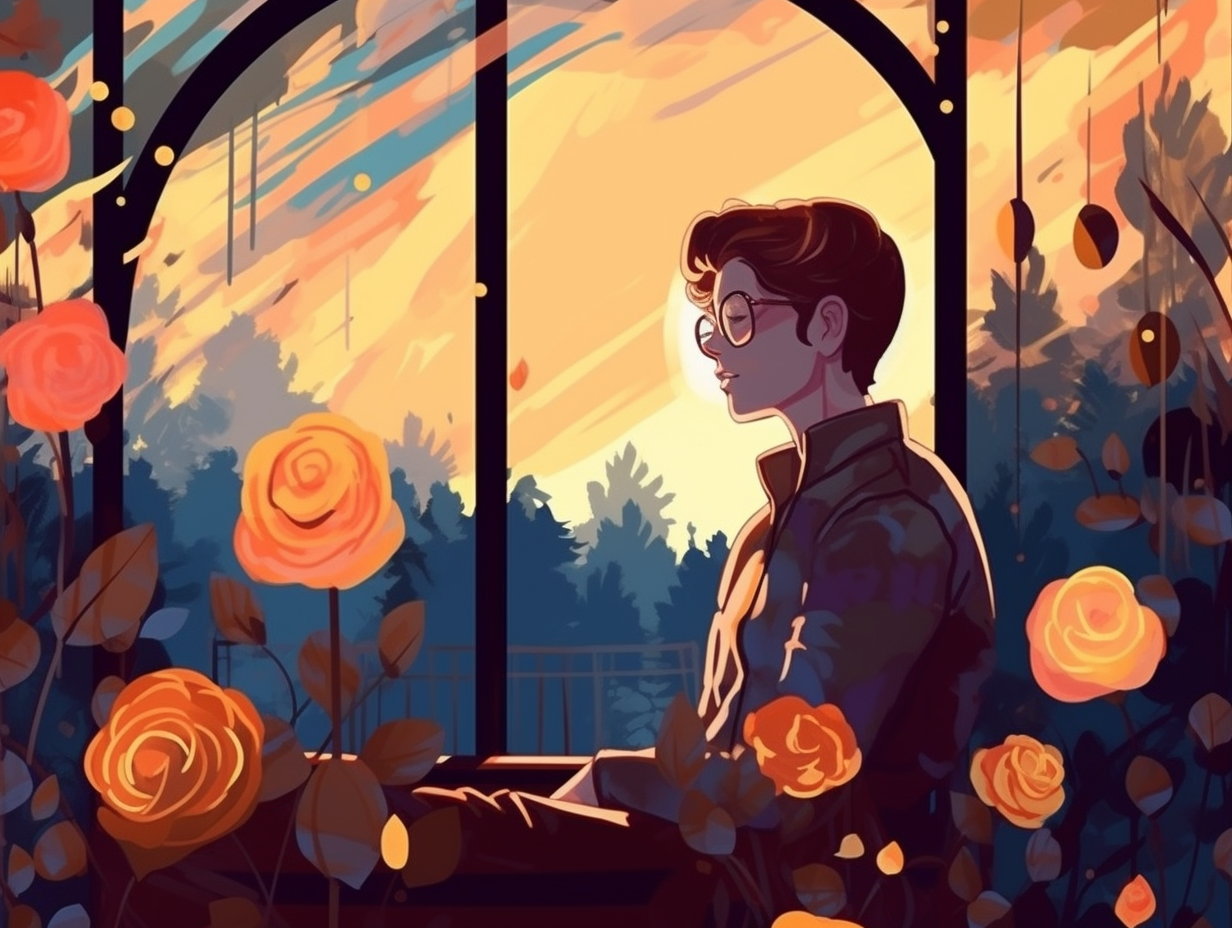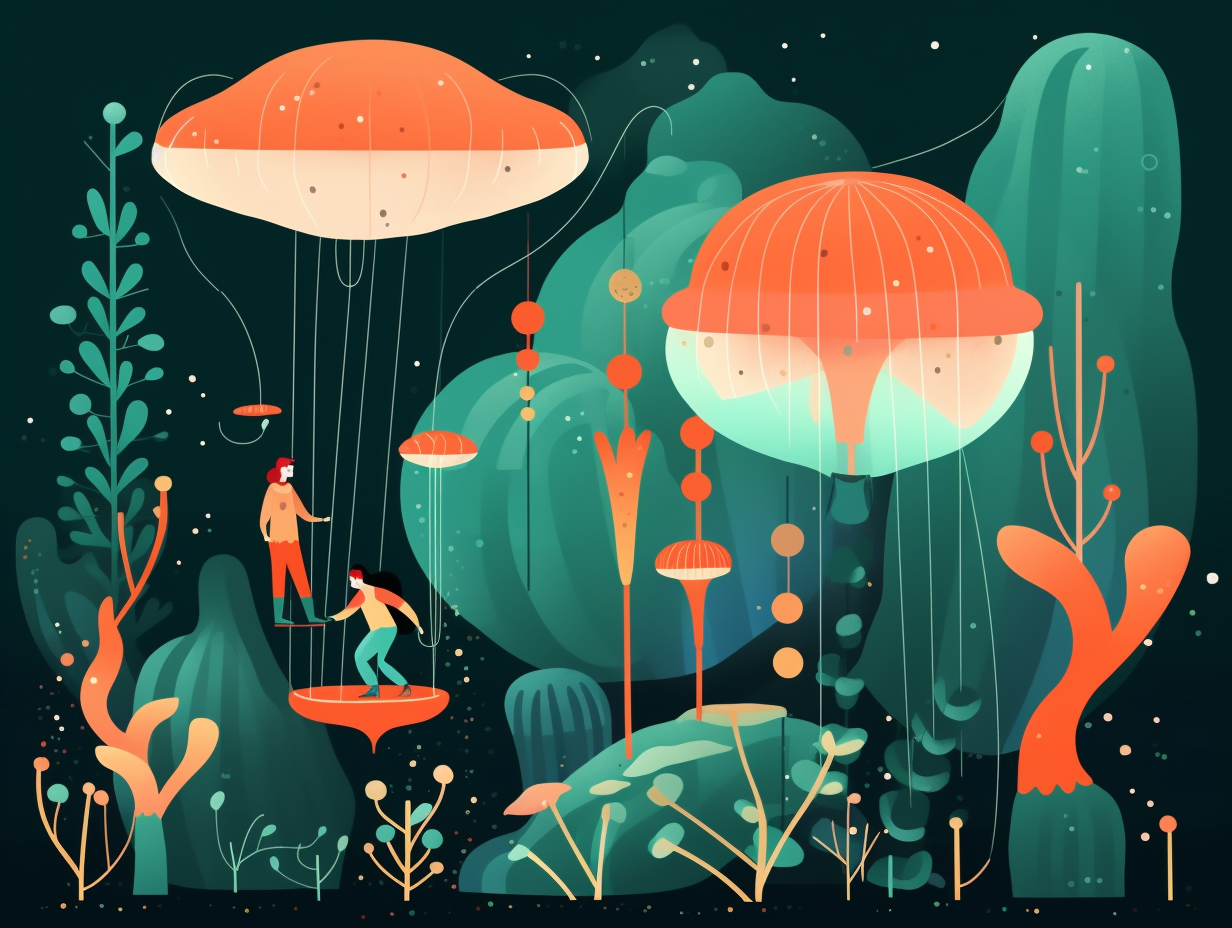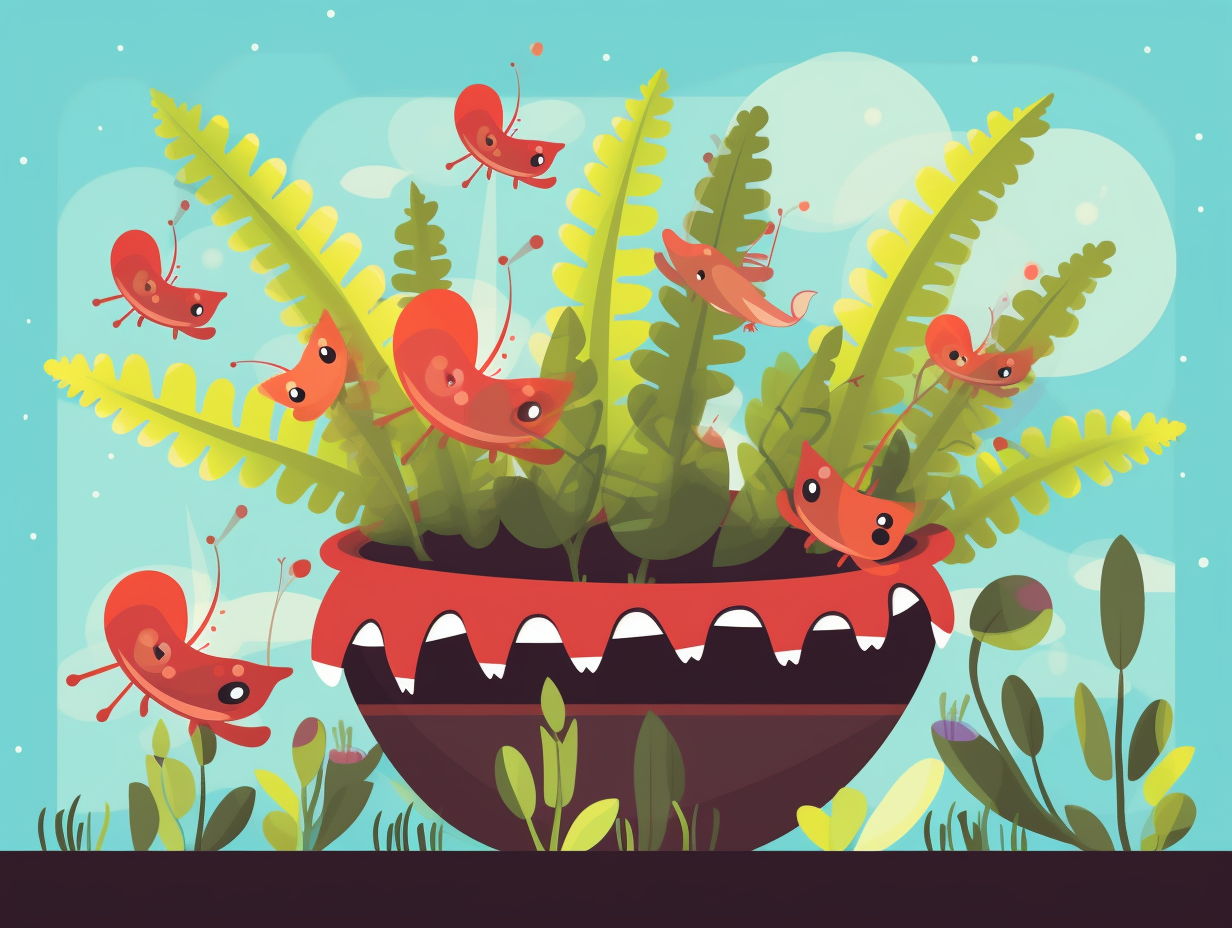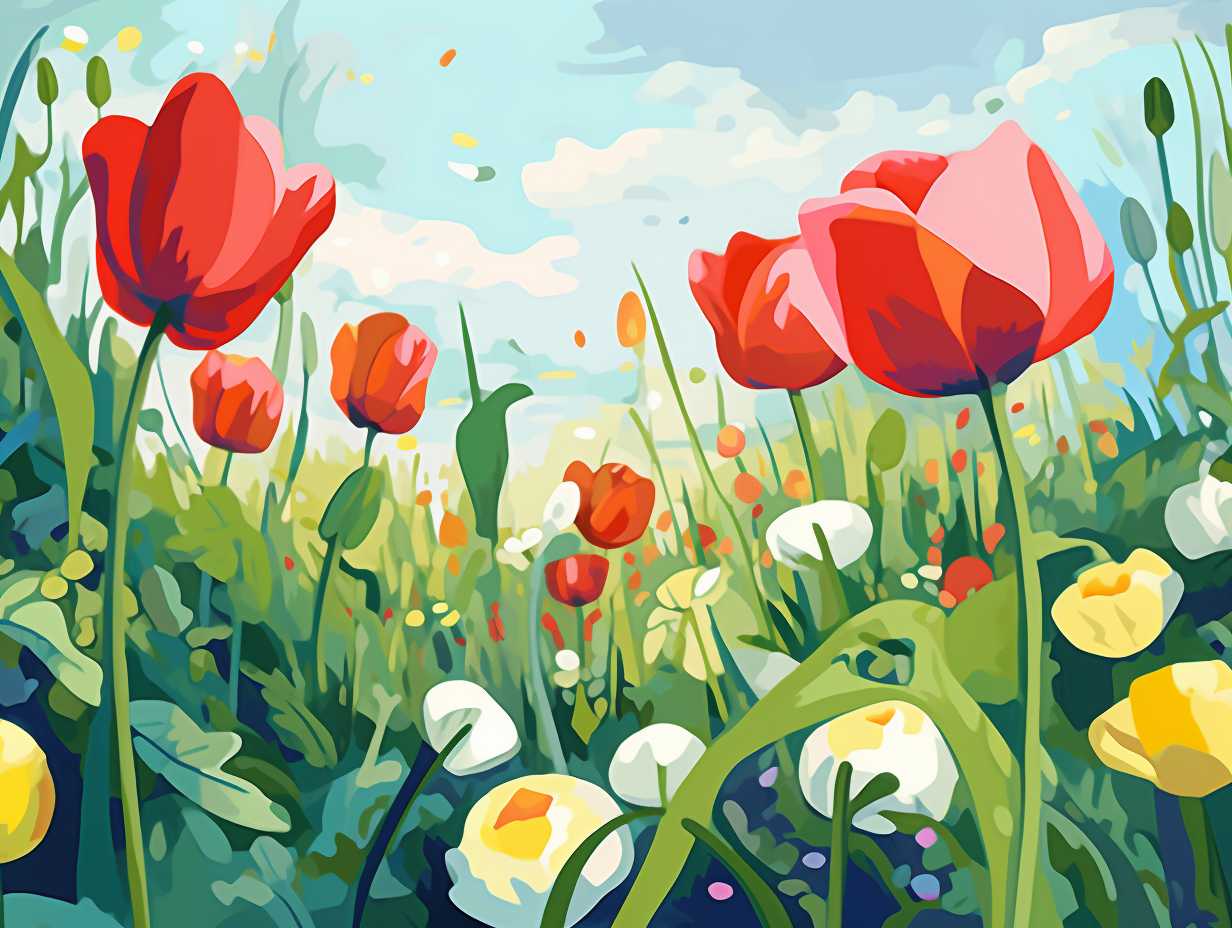Blooming Marvels: 21 Fascinating Flower Fun Facts to Brighten Your Day

1. Frankenstein of Flowers: Titan Arum
If you've ever wanted to meet the Frankenstein of flowers, look no further than the jungle's gigantic, smelly superstar: The titan arum, or corpse flower, boasts a staggering 6 to 8 feet in height and a bloom diameter close to 3 feet, making it the largest unbranched inflorescence in the world, and its leaves alone can grow up to a whopping 15 feet tall.
Source => chicagobotanic.org
2. Stinky Attraction Strategy: Corpse Flower
If the titan arum were a restaurant, it would undoubtedly have the world's most impressively gut-churning signature dish, designed to attract only the most un-disCERNing of patrons: Feast your nostrils on the corpse flower, which not only boasts the planet's largest unbranched flowering structure, reaching up to 3 meters in height, but also has a party trick where it generates heat to spread its horrifyingly nauseating aroma – akin to Nature's dirty diaper – across great distances to woo carrion beetles into a pollination trance.
Source => kew.org

Did you know plants have their own way of communicating through scented signals? Discover how they warn each other of dangers and invite some unexpected guests!
=> Fun Facts about Plants
3. Bee Orchid: The Floral Counterfeiter
If a picture is worth a thousand words, then the bee orchid is the Banksy of the flower world – creating counterfeit bees in their very petals!: The bee orchid has evolved to resemble a bee, with furry, brown lips and yellow markings on its flower, but in the UK, where the right species of bee doesn't exist, they self-pollinate and can be found on dry, chalk, and limestone grasslands from June to July - much like an artistic impostor in their own right!
Source => wildlifetrusts.org
4. Plants' Rave Night: Red & Blue Lights
When plants throw a rave, they party under blue and red lights: Blue light pumps up their chlorophyll production for strong stems and leaves, while red light gets them grooving on flowering and fruit production, seed germination, root growth, and bulb development. Learn to two-step, nature style!
Source => gardeningknowhow.com
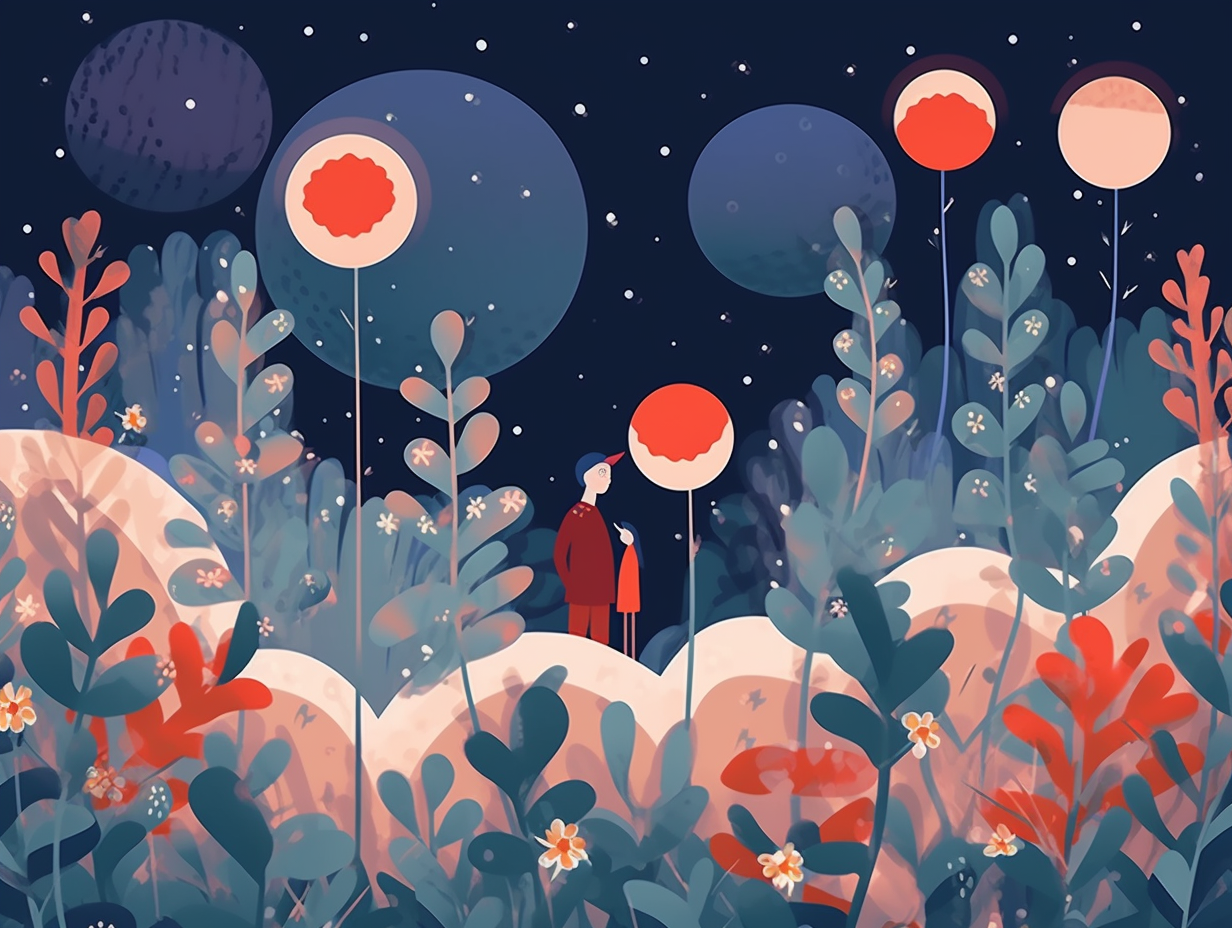
5. Fashionably Late: Flowers in Evolution
In a world where trees once wore cones like party hats before getting hip to the floral fashion trend: flowers, or angiosperms, made their grand entrance only around 130 million years ago, a relatively recent phenomenon in the history of plant life evolution.
Source => amnh.org
6. Sunflower Tinder: Swiping Right for Sunshine
If sunflowers had a Tinder profile, it would probably read "swipe right if you love sunshine as much as I do"; luckily for them, Mother Nature is a master matchmaker: Sunflowers practice heliotropism, turning in the direction of the sun throughout the day to maximize their sunlight exposure and promote optimal growth, temperature, and pollinator attraction.
Source => homeguides.sfgate.com
7. Root Warfare: Sneaky Plants
In an astonishing case of "mind your own roots," some sneaky plants engage in botanical espionage to sabotage their neighbors: They release allelochemicals through their roots, interfering with the growth or development of nearby plants or organisms, and use a mycorrhizal network as their secret pathway for these shady exchanges.
Source => encyclopedia.pub
8. Pollinator Matchmaking: Bees, Birds, and Beyond
Nature's matchmaking game: pollinators like bees, butterflies, and birds serve as botanical Cupids, helping plants swipe right and find their perfect reproductive partners. The surprise twist: they're responsible for pollinating 80% of all flowering plants and three-quarters of the crops that make up our meals - that's one in every three bites we take!
Source => fs.usda.gov
9. Tulip Mania: Worth More Than Gold!
Before the tulip bubble burst, it was all fun and petals, and worth its weight in gold: In the 17th century, tulip bulbs in Holland were so amazingly valuable that they were actually priced higher than gold and silver, with a singular bulb commanding a whopping $2,000!
Source => essexflorist.net
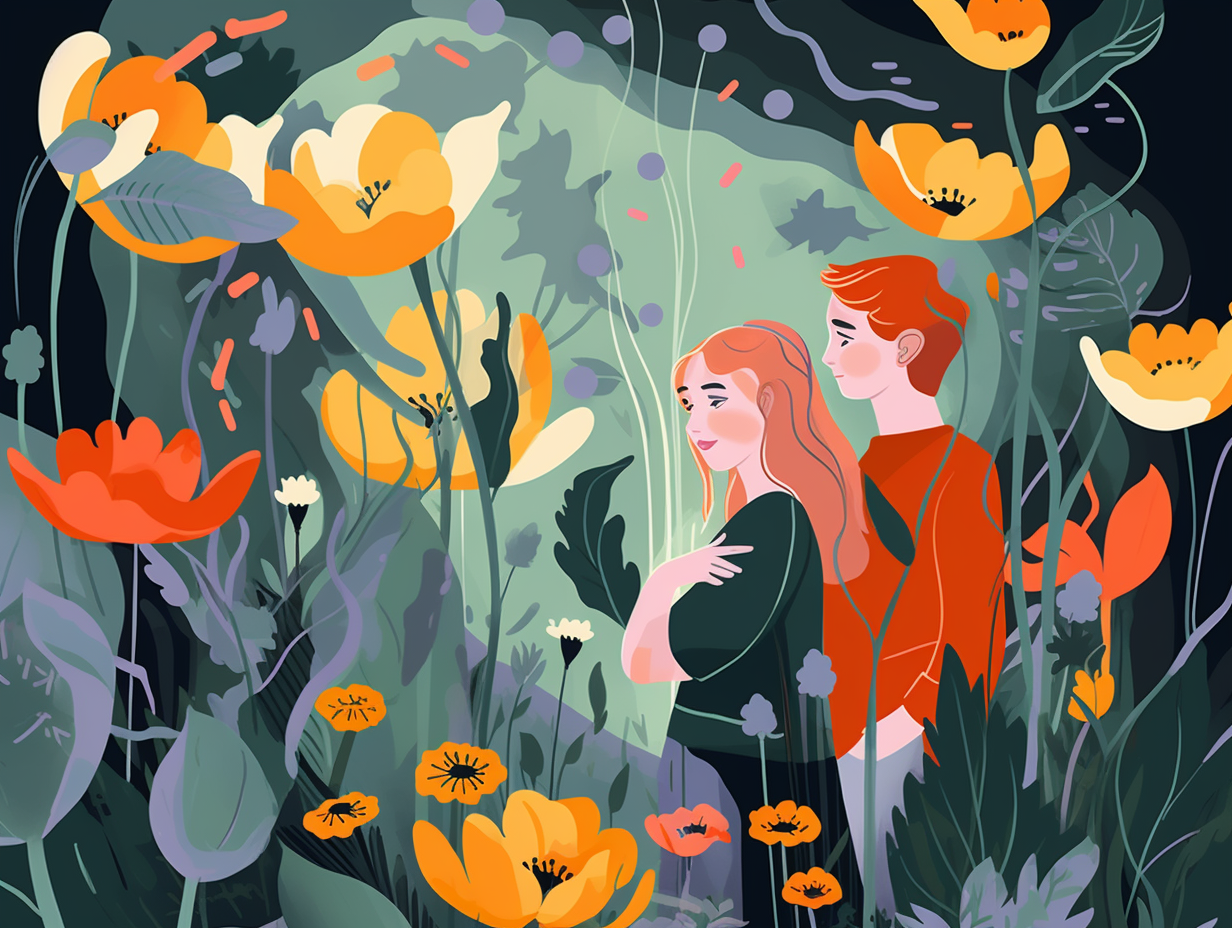
10. Amazon's Floating Dinner Plates: Giant Water Lilies
Behold, the floating dinner plates of the Amazon: geometry nerds in the botanical world! These giant water lilies, known specifically as V. cruziana, have a one-of-a-kind vascular design that cleverly balances structural support and energy conservation – letting them reign supreme among their fellow plants in the South American waterways, all while resisting the temptation to let any small children hitch a ride.
Source => nationalgeographic.com
11. Rare Blue Blossoms: Master of Light Illusions
Feeling blue? You're in good company with Mother Nature, as she struggles to go beyond her "green thumb" ways: Less than 10% of flowering plants produce blue blossoms, due to the lack of true blue pigments in their arsenal – instead, they cleverly mix and tweak existing pigments and manipulate reflected light to create stunning azure hues found in delphiniums, bluebells, and morning glories.
Source => set.adelaide.edu.au
12. Bee Orchid Identity Crisis: Self-Pollination MVP
Flirting with a floral identity crisis: The Bee Orchid, Ophrys apifera, is a one-man show by impersonating a female bee for visual appeal but practices self-pollination in the northern ranges, including the UK, while depending on the Eucera solitary bee's charm in the Mediterranean for the usual pollination rituals.
Source => zoomologyblog.wordpress.com
13. Bamboo Fashionably Late: Synced Blooms
Talk about being fashionably late: bamboo plants take 40 to 80 years to finally show off their floral bling, then they all mysteriously coordinate their blooming, resulting in bamboo rice, at intervals as long as 65 or even 120 years – a puzzling phenomenon possibly designed to keep hungry animals on their toes!
Source => en.wikipedia.org
14. One Night Only: Night-Blooming Cereus
Talk about a one-night stand with flair: The Night-Blooming Cereus produces fragrant, show-stopping blooms that begin their performance after sunset, take their final bow as the sun rises, and encore for several weeks with a generous number of buds.
Source => uaex.uada.edu

15. Tulipomania: Luxurious Symbol of Wealth
Blooming beautiful bandits: Tulips during the Dutch Golden Age were so mesmerizingly vibrant and rare, thanks to a viral infection with a flair for fashion that unwittingly launched Tulipomania—a phenomenon where tulip bulb prices skyrocketed, ultimately establishing the tulip as a luxurious symbol of wealth and status.
Source => en.wikipedia.org
16. The Plant Houdini: Rose of Jericho
Like an ancient desert sorcerer cast in plant form, the Rose of Jericho is the Houdini of the botanical world, seemingly defying the sands of time and the driest of conditions, only to dramatically rise again with just a splash: This extraordinary plant, hailing from the deserts of the Middle East and Central Africa, can survive in a dormant, seemingly lifeless state for years without water, yet quickly comes back to life by unfurling its petals within 12 hours of exposure to moisture – a power that has earned it a starring role in various spiritual and cultural practices symbolizing resurrection and healing.
Source => evergreenseeds.com
17. Scented Secret Agents: Flowers' Defense Mechanism
Flowers, nature's perfumers or sneaky secret agents? These seemingly innocent blooms tackle trespassing herbivores and troublemaking pathogens with their signature scents, doubling as botanical bad boys: In response to stress factors, some flowers emit distinct odors as a defense mechanism, even signaling neighboring plants to activate their own protective measures – truly the Guardians of the Garden Galaxy!
Source => ncbi.nlm.nih.gov
18. Carnivorous Plant Club: Dine on Insects
Ravenous rogues of the botanical world, these floral fiends are no wallflowers; they prefer to munch on insects à la carte: Carnivorous flora such as the sundew, butterwort, pitcher plant, and cobra lily have evolved to ensnare and consume insects with specially adapted leaves, while the Venus flytrap's pièce de résistance is its quick-closing trap, equipped with touch-sensitive hairs to secure its unwitting meal.
Source => hgtv.com
19. Floral Transformers: Bracts in Petal Couture
Flowers are the original transformers, with their brightly colored bracts bringing all the pollinators to the yard by sporting the latest in petal haute couture and acting like botanical bouncers at Club Pollinate: Bracts, often mistaken for petals, are specialized leaves that not only protect the flower from harsh environments and pests but also have the critical mission of luring pollinators for a floral tango, unsheathing the reproductive secrets of these natural beauties.
Source => byjus.com
20. Multi-Purpose Herb: Queen Anne's Lace
Hold onto your herbs and spices, for we're taking a trip down the wild side with Queen Anne's favorite lace: Queen Anne's Lace, or Daucus carota, was brought to North America by colonists as a multi-purpose medicinal herb, used as a diuretic, antiseptic, digestive aid, and even a hallucinogenic! This sugary-rooted plant native to Europe and Southeast Asia has since cozied itself up in North American landscapes and supersized its way into kitchens. It boasts edible roots, leaves and flowers, but beware – it's a doppelgänger for deadly poison hemlock, so forage responsibly or risk meeting the great herb gardener in the sky!
Source => thehighline.org
21. Mathematically Groovy Roses: Fibonacci Patterns
Roses may not know how to do the macarena, but they sure know how to bust a move... mathematically speaking, that is: The spiral pattern of petals on a rose bloom (and other flowers) follows the Fibonacci sequence, a mathematical pattern discovered by Italian mathematician Leonardo of Pisa, which also appears in sunflower seeds and determines the number of petals on certain flowers like irises and delphiniums – talk about nature being a numbers nerd!
Source => funnyhowflowersdothat.co.uk
Related Fun Facts


